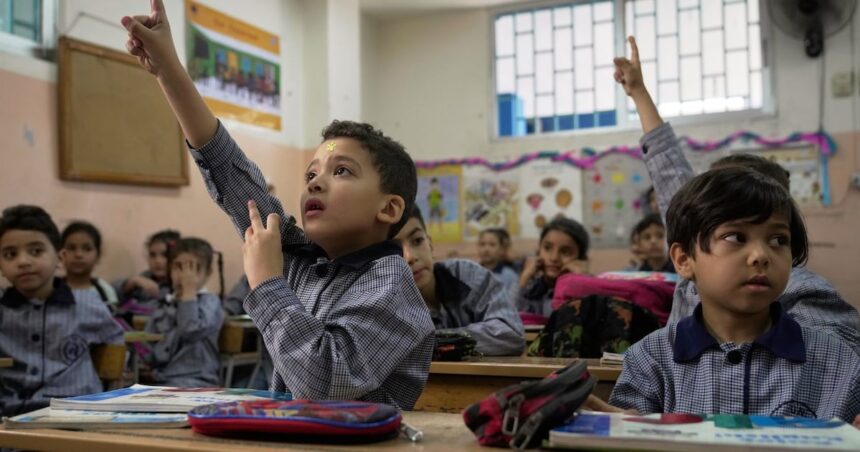I stepped through the crowded hallways of the United Nations headquarters in New York last week, where diplomats rushed between meetings with the usual mix of purpose and resignation. The building itself, once a gleaming symbol of post-war cooperation, now shows its age—not unlike the institution it houses as it approaches its 80th anniversary next year.
“We’re facing a perfect storm of challenges,” confided Amina Saleh, a veteran UN humanitarian coordinator I’ve known since our paths crossed during the Syrian crisis. “Multiple conflicts, climate disasters, donor fatigue, and increasingly, direct attacks on our personnel in the field.”
The numbers tell a stark story. UN humanitarian operations currently reach 250 million people worldwide, yet face a record funding gap of $57 billion for 2025—more than double the shortfall from just five years ago. This comes as humanitarian needs have exploded, with displacement at unprecedented levels and over 300 million people requiring emergency assistance.
What’s changed isn’t just the scale but the nature of modern crises. Where UN agencies once operated with general respect from warring parties, recent years have seen deliberate targeting of humanitarian workers. Last year alone, 185 UN aid workers were killed in the field—the highest number in the organization’s history, according to the Aid Worker Security Database.
“The blue flag no longer provides protection,” said Jean-Pierre Lacroix, Under-Secretary-General for Peace Operations, during a security briefing I attended. “We’re operating in environments where some parties view humanitarian principles as Western impositions, not universal values.”
In Gaza, Yemen, Sudan, and Ukraine, aid convoys now require complex security arrangements that delay critical supplies. This breakdown of humanitarian norms coincides with what Secretary-General António Guterres calls a “fracturing of global solidarity.”
Walking through the UN’s Economic and Social Council chamber, I noticed fewer representatives from major donor countries at a critical funding conference. Western nations that traditionally bankrolled humanitarian operations now face domestic pressures to cut foreign aid. The United States, traditionally the largest donor, has proposed cutting its UN contributions by 30% for fiscal year 2026.
“We’re being asked to do infinitely more with significantly less,” explained Mark Lowcock, former UN humanitarian chief, when I spoke with him by phone. “The system was designed for a different era, when crises were more episodic and less protracted.”
Climate-related disasters further strain resources. The World Meteorological Organization reports that climate-driven displacement has increased 143% over the past decade. In the Horn of Africa alone, climate shocks have pushed 36 million people into severe food insecurity.
At the UN’s logistics base in Brindisi, Italy, which I visited earlier this month, warehouse manager Paolo Rizzi showed me the challenge firsthand. “Ten years ago, we’d prepare for maybe three major emergency responses simultaneously. Now we’re juggling twelve active crises, with supplies constantly redirected as new emergencies erupt.”
This operational strain coincides with geopolitical gridlock. The Security Council, designed to maintain international peace and security, has increasingly become a venue for great power competition rather than cooperation. Russia and China have expanded their influence within UN agencies while frequently opposing Western-backed humanitarian interventions.
“The humanitarian system is becoming another arena for great power competition,” observed Richard Gowan, UN director at the International Crisis Group. “Aid is increasingly politicized, with competing blocs using humanitarian access as leverage.”
Technology offers some solutions. The World Food Programme now employs blockchain to deliver assistance directly to refugees via digital wallets, reducing administrative costs by approximately 30%. Satellite imagery and AI help predict displacement patterns before they occur, potentially saving billions in emergency response.
But innovation can’t fully compensate for the fundamental challenge: a 20th-century institution trying to address 21st-century problems with diminishing resources and fragmented international support.
Some member states are pushing reform proposals ahead of next year’s 80th anniversary Summit of the Future. Brazil and South Africa have introduced measures to strengthen the UN’s humanitarian coordination mechanisms, while European donors advocate for streamlining operations across agencies.
“Reform is essential, but it can’t happen without addressing the elephant in the room—resources,” said Sigrid Kaag, the Netherlands’ former Minister for Foreign Trade and Development Cooperation, during a panel I moderated last month.
In refugee camps across Lebanon, Jordan, and Kenya, I’ve witnessed firsthand the human consequences of this institutional crisis. At Zaatari camp in Jordan, monthly food assistance for Syrian refugees has been cut from $32 per person to just $14.
“We understand there are many crises, but our children can’t eat understanding,” Fatima, a Syrian mother of four, told me as she showed me her nearly empty food cupboard.
The UN’s humanitarian agencies weren’t designed to permanently sustain millions of people in protracted crises. Yet with political solutions elusive in conflicts from Yemen to Myanmar, that’s precisely what they’re being asked to do.
As the UN approaches its 80th birthday, the question isn’t whether it remains necessary—it undoubtedly does—but whether member states will provide it the tools and resources to fulfill its humanitarian mandate in an increasingly fractured world.
For the millions who depend on UN assistance for survival, the answer can’t come soon enough.






